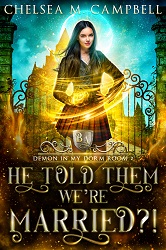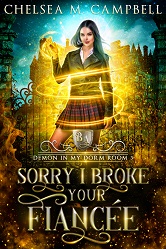I’ve been meaning to write this post for over a week and for various reasons haven’t gotten to it. But I’m here now, so let’s talk revision!
On an earlier post, Maya pointed out:
What I realized a lot is that many websites talk about how to fix your story line by line, not really how to make it better as a whole such as choosing what to cut and what to add.
The straight up, annoying answer is that if something’s not moving the story forward, cut it. Â And if there’s somewhere where the story could be moving more, add. Â This is true, but it’s also the kind of answer that doesn’t really explain anything, and I hate those kinds of answers. Â I like to know how things tick.
You might also notice that the two options I listed above are two sides of the same coin. Â So basically every time you find something in your novel that isn’t moving things along or adding any oomph, whether it’s a sentence, a paragraph, a conversation, a scene, etc., you have the option to either cut it or add to it. Â It’s like a sugar cookie. Â You can either chuck that boring sucker or add frosting and sprinkles.
But before I get ahead of myself, let’s talk about what “moving the story forward” actually means. Â For me, it means that your scene (I’ll use scene for sake of argument, but this applies on all levels of a manuscript) has more than one type of information going on. Â A scene can further the plot (or subplot), deepen characterization, or enhance worldbuilding. Â But what a scene needs to do is at least two out of the three.
This is also what a sentence needs to do as well. Â This is what agents/editors/authors mean by “missed opportunities.” Â Every line of your book is a chance to not just, say, describe what someone’s wearing, but to show what they’re wearing reveals about them (characterization), and it’s also a good opportunity to throw in some worldbuilding (what does what they’re wearing say about their world or their particular situation?), and possibly even plot (is that a bloody glove hanging out of her pocket?). Â These things can also be achieved by giving us a character’s opinions about themselves and the world around them.
A scene as a whole can have these missed opportunities, too. Â Maybe you have a scene you really love and all it is is your two favorite characters talking at the kitchen table. Â And in all honesty it’s not really moving the story along, but you like it and you think it has potential. Â And yeah, yeah, I know–kill your darlings. Â Whatever. Â But anyway, you argue that this scene has characterization. Â This is where the main couple makes gooey love eyes at each other for twenty minutes. Â But we already knew they were in love, plus… twenty minutes? Â What is this scene really giving the audience? Â Nothing. Â It’s not deepening characterization if it’s not revealing anything new.
So what do you do to save this scene? Â Change it up. Â Add conflict. Â Not necessarily between the two characters. Â It can be an outside conflict. Â But whatever it is should fulfill two of the requirements I listed. Â Maybe while they’re talking at the table, having a normal boring conversation, but one of them is surreptitiously checking their phone every five minutes for a text that will call them away to their super secret spy job that the other person knows nothing about and that they probably won’t be coming back from this time. Â It deepens characterization because now we’re watching how this person is handling the situation. Â How do they talk to their loved one while knowing they might be permanently called away at any moment and the other person has no idea? Â Do they get overly sappy? Â Do they act super normal and don’t let on at all? Â And what choice will they actually make once they get the text? Â This also deepens plot because OMG, what is this spy mission? Â Why is it so dangerous? Â What is so important that they could even think about walking away from an ooey gooey love such as this? Â It may even deepen worldbuilding, depending on what we already know and what’s going on, but it could be a great place to slip in some details. Â An army of steam-powered robotic unicorns are heading towards the president’s dirigible and are going to shoot lasers at it and bring it down!
Now this scene is moving things along. Â And you could easily take it further and add in more issues that make the choice for our gooey spy lover even harder. Â You could up the ante on the plot and say if our spy doesn’t go on this mission, their love is going to die, and now it’s not much of a choice for them (though how they handle it still is), and they have to break their lover’s heart to save their life.
And okay, you might be thinking, “That’s great if I have a scene I want to save, but I still don’t know what to cut!” Â An easy list of things to cut is anything you feel “has” to be in the book, but that is ultimately boring. Â Like, say, a character walking to their friend’s house. Â Or a wandering group of minstrels traveling across the countryside to get to the castle. Â You may catch yourself going, “Ugh, I hate this… but it has to be here!”
Why? Â Because the audience needs to see how the characters get from point A to point B? Â A simple line stating “The minstrels spent months traveling all across the countryside, but now were finally here at the castle to play music for the king” (or whatever it is they’re doing there) works great. Â Anything that is just there because “the audience” supposedly needs it is most likely filler. Â It’s easy to fall into the habit of showing everything your characters do, but leave it out and save room for the good stuff. Â And don’t force yourself to write something boring because you feel it “needs” to be there. Â You have my permission to skip that scene and write what you really want to write about. Â You will be happier, your characters will be more interesting, and you’ll have a better chance of drawing your audience into your story.
If you get stuck, don’t agonize. Â Just try something and see if it works. Â If your equivalent of the dull kitchen table scene is someone walking from point A to point B and all the books say don’t show that, but you really like that scene and feel it’s important, but OMG, what will people think if you leave it in?!?! Â Leave it in. Â Spice it up if you need to. Â But you might not even need extra spice. Â If it’s meat and not filler, then it’s meat and not filler and there’s no reason to cut it.
Following these guidelines on all levels will strengthen your book and make it less swampy and more zingy. Â And honestly, I could go on about revision for several more posts, so if there’s something I haven’t covered or you have questions, just ask!



Just as informative as your other posts. Gosh you really push me along with your writing advice… you could make money off that ;)
The doctor is in. That’ll be 5 cents, please. ;)
Great advice. Do you think you could do a post on sentence-by-sentence spice-adding, in terms of dialogue and such? The problem I often have with writing is that my plot either moves too quickly and I can’t think of what to put for actual descriptive meat, or I get bogged down in descriptions and dialogue and lose the plot there. Any tips?
I will make that my next writing post! :D
It took me a bit longer to get to your question than I meant for it to, but the post is up! http://www.chelseamcampbell.com/?p=725